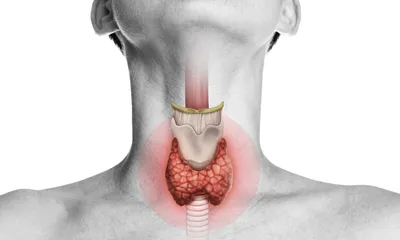Bipolar Disorder
-
Description
-
Signs & Symptoms
-
Anatomy
-
Cause
-
Diagnosis
What is Bipolar Disorder?
Bipolar disorder is a mental health condition and chronic mood disorder that causes the sufferer to have profound swings and shifts in mood, outlook, and energy levels plus drastic behavioral changes. It is also referred to as manic depression, and sufferers will have manic and depressive episodes where they are either overly ‘up’ (manic episode) or overly ‘down’ (depressive episode).
Some people with bipolar disorder may have hypomanic episodes where they do not swing up as much, and their manic episodes do not last as long. Depressive episodes tend to be consistent among sufferers, and there are 4 types of bipolar disorders. With Bipolar 1, the individual will have long-lasting manic episodes (up to 7 days) and depressive episodes that will last weeks at a time. People with Bipolar 2 have more hypomanic episodes than manic, but their accompanying depression will be more chronic.
Cyclothymia is a type of bipolar disorder where the person has a chronically unstable mood state and shifts between manic and depressive episodes are not so clearly defined or identified. They may also have long stretches where they have no altered mood states. Unspecified bipolar disorder is any variation of the disorder that doesn’t fit into the diagnosis criteria for the above three.
What Causes Bipolar Disorder?
It is believed that there is a strong genetic inheritance component to bipolar disorder, meaning you are more likely to be bipolar if your parents or other preceding members of your family also have or had the disorder. Physiologically what happens with bipolar disorder is that there are structural changes to the network of the brain, and when they occur, certain parts of the brain are wired to be much more active than others.
In some cases, a shrinking brain can be the reason a person develops bipolar disorder, and there are many different reasons why the brain might decrease in size and mass to cause this. However, this is very rare.
There are factors that can worsen the condition and this is also related to what causes bipolar disorder. An overactive thyroid gland (hyperthyroidism) is one of them, as is excess stress or trauma.
Bipolar Disorder Symptoms
There is much uniformity to the bipolar disorder symptoms that sufferers will have when they have this chronic mood disorder. They will also be different based on whether the person is having a manic or depressive episode.
Manic episode symptoms:
- Excessive happiness, hopefulness, and excitement
- Restlessness
- Sudden and swift mood changes
- Rapid speech and racing thoughts
- Boosted energy and less need/desire for sleep
- Serious impulsivity and poor judgment
- Making grand and unattainable plans
- Engaging in reckless and risky behavior
- Delusions of grandeur
- Psychosis (in the most severe manic episodes)
Depressive episode symptoms:
- Overwhelming sadness
- Low energy and ongoing fatigue
- Lack of motivation
- Feelings of hopelessness or worthlessness
- Less enjoyment of activities and pursuits, or less interest in them
- Concentration difficulties and inability to make decisions
- Severe emotional instability
- Irritability
- Increased need for sleep
- Insomnia or excessive sleep
- Appetite changes
- Weight loss or gain
- Suicidal ideations
Bipolar Disorder Treatments
The most conventional approach to bipolar disorder treatments is to have the person start on mood-regulating medications like Zonalon or Abilify. These drugs work by either balancing neurotransmitter chemicals in the brain (Zonalon), or by activating or blocking receptors that these neurotransmitters work on to dictate brain function (Abilify). Both are effective for treating bipolar disorder and ensuring that episodes of either type are less severe and the swings between them are less pronounced.
For people with severe bipolar disorder and regular instances of psychosis, an antipsychotic medication like Vraylar may be needed.
Psychotherapy for bipolar can also be very effective and helpful, and this can be true for psychoeducation, interpersonal and social rhythm therapy, family-focused therapy, and CBT (cognitive behavioral therapy).
Signs & Symptoms
- Mood swings
- Mania or hypomania
- Depression
- Irritability
- Euphoria
- Rapid speech
- Racing thoughts
- Impulsiveness
- Fatigue
- Feelings of hopelessness
- Difficulty concentrating
- Sleep disturbances
Anatomy
- Brain
- Neurotransmitters
- Prefrontal cortex
- Limbic system
- Amygdala
- Hippocampus
Cause
- Genetic factors
- Neurochemical imbalances
- Brain structure abnormalities
- Stress
- Trauma
- Substance abuse
- Hormonal changes
Diagnosis
- Psychiatric evaluation
- Mood charting
- DSM-5 criteria
- Physical examination
- Blood tests
- Thyroid function tests
- Neuroimaging (MRI, CT scan)



